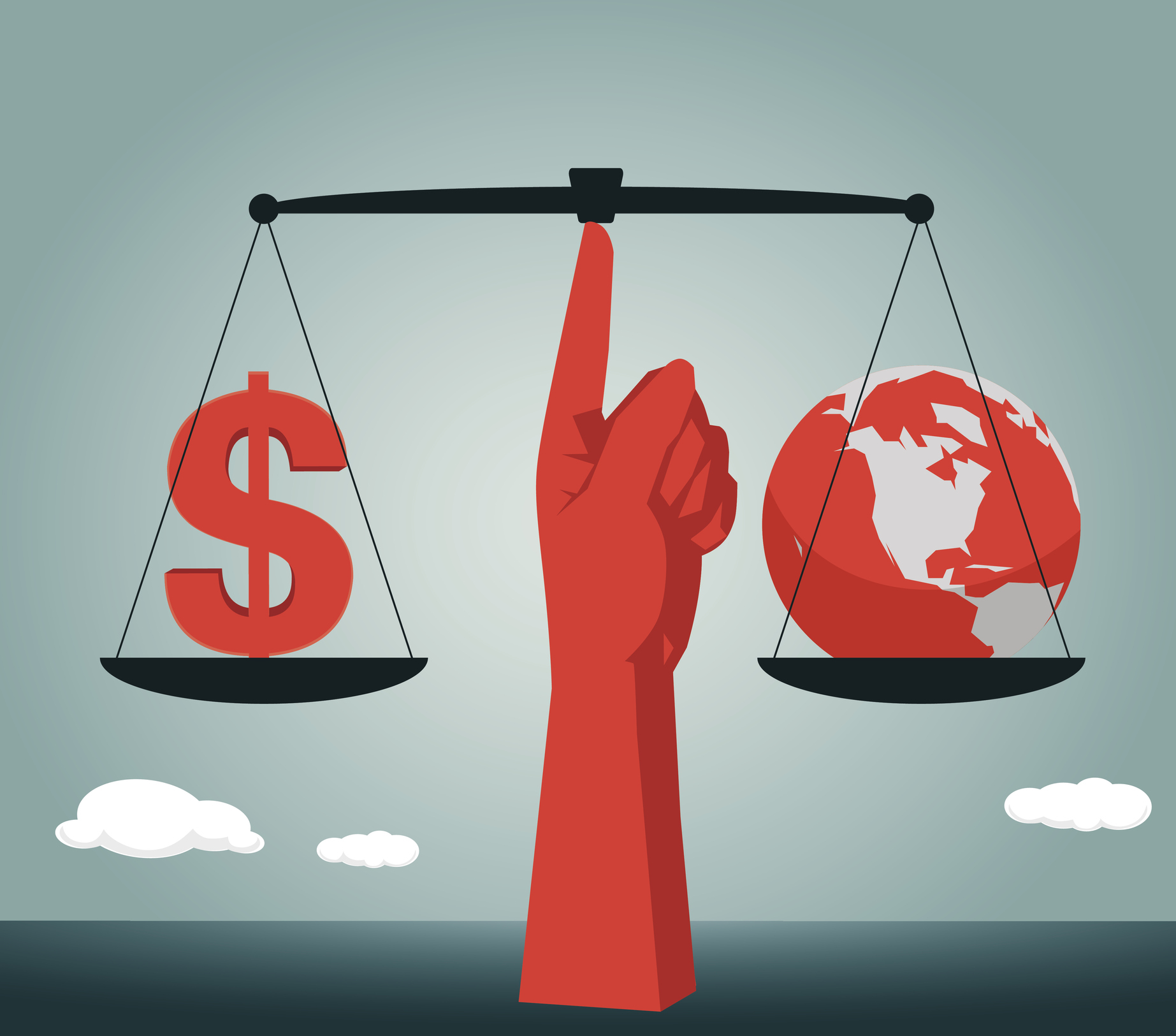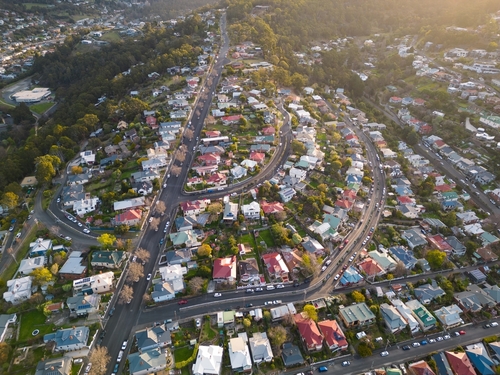The New Maths Of Socially Responsible Investing
Investors are putting a lot more money into ESG funds, but they also expect a lot more in return.
ESG investing has come a long way in the past few years.
Once a niche investment sector, strategies that screen companies and other assets based on environmental, social and governance (ESG) criteria are attracting more money than ever.
There are various definitions of—and approaches to—so-called sustainable investing. Some strategies seek to avoid investments in industries deemed harmful to society such as tobacco, while others aim to further environmental or social causes like climate change or workplace diversity. Regardless of the approach, interest in the category as a whole is growing dramatically.
At the end of 2019, about US$17.1 trillion—roughly one-third of all assets under professional management in the US—was being managed using some type of sustainable-investment strategy or by institutions that filed shareholder resolutions on ESG issues, according to the most recent data from the US SIF Foundation, a sustainable-investing trade group. That was a 42% increase from two years earlier, the group said.
In the first quarter of this year, meanwhile, a net $21.5 billion flowed into mutual funds and exchange-traded funds that use ESG screens or some other type of sustainable-investing approach, a record amount and almost double the net inflows in the year-earlier quarter, according to a report from Morningstar Inc.
“Individual investors are connecting with the idea that they can address some of the challenges they are concerned about,” says Michael Jantzi, chief executive officer of Sustainalytics, a Morningstar company that focuses on ESG and corporate-governance research.
As more people dip their toes into ESG waters, however, expectations are changing: In addition to feeling good about where they are putting their money, these investors also crave good returns. And while there are more ways to measure how seriously companies and asset managers take sustainability issues such as workplace diversity and carbon emissions, there still is a lack of clarity when it comes to ESG disclosures, an area where regulators have started weighing in.
Here is a closer look at those and other shifts taking place in ESG investing in 2021:
Mainstream success
For years, there has been a subset of investors focused on ESG, and companies that have quietly made such issues a priority, says John Streur, president and CEO of Calvert Research and Management, an investment-management firm that specializes in responsible and sustainable investing across global capital markets.
Now, more investors and companies are getting on board, he says, as a growing body of research suggests that focusing on material ESG issues can drive better financial performance. Outside factors also have been at play, including a political focus on climate change and racial and social unrest following the May 2020 killing of George Floyd and a global pandemic that showed how quickly a multitude of lives can be upended.
“Five years ago, people could still say this is some far-off problem and it could impact my great-great-grandchildren, and I’m not going to worry about it in my investments today,” Mr. Streur says. “That has been debunked and it’s right here, right now.”
Higher expectations
The socially conscious investors of yesterday tended to be more focused on causes than performance—that is, they were willing to give up returns to do good things with their money. These days, a lot more people are in it not just to advance causes they believe in, but in the hopes of achieving returns that are equal to or greater than those of traditional investments.
“The whole movement has shifted,” says Craig Jonas, co-founder and CEO of CoPeace, an impact-investing holding company in Denver. “Investors like the idea of having measurable impact plus strong returns,” he says.
A notable 47% of respondents in the Schroders 2020 Global Investor Study say they are attracted to sustainable investments because of their environmental impact, while another 42% base their attraction to sustainable funds on the likelihood they will provide higher returns.
Whether values-based investing actually pays off, however, is a matter of debate. Last year, U.S. sustainable equity funds outperformed their traditional peer funds by a median total return of 4.3 percentage points, while U.S. sustainable bond funds outperformed their traditional peer funds by a median total return of 0.9 percentage point, according to a report from the Morgan Stanley Institute for Sustainable Investing.
But that isn’t the whole story. Meir Statman, professor of finance at Santa Clara University in California, says socially responsible funds tend to have higher annual fees, so their returns are likely to lag behind over time.
“Short-run realized returns are noisy because of luck or other circumstances, sometimes favouring ESG investors and sometimes favouring non-ESG ones,” Dr. Statman says. “Each tends to crow when returns favour them. The logic of fees, however, suggests that, in the long run, ESG investors are likely to earn lower after-fee returns than non-ESG investors,” he says.
Dr. Statman advises ESG investors to see how their particular ESG fund stacks up over time against a low-cost index fund of the same category. He offers the example of the Vanguard FTSE Social Index Fund, categorized by Vanguard as a large growth fund. It had an annualized return between May 31, 2000, and June 17, 2021, of 6.73%, compared with 7.67% for the Vanguard Growth Index Fund, also a large growth fund, over the same period.
A look at costs shows that the average annual expense ratio of sustainable ETFs that invest in U.S. stocks is 0.33% versus 0.09% for U.S. equity ETFs in the cheapest quintile by fee, according to Morningstar Direct, an investment-research platform.
Product proliferation
A few years ago, it was hard to build a well-rounded portfolio solely from ESG investments, says Heidi Vanni, chief client officer and managing director at Boston Trust Walden Co., a Massachusetts chartered bank and trust company. That is no longer the case, she says.
“Today, in both the public and private markets, there’s no shortage of products—ESG opportunities abound,” says Ms. Vanni, meaning investors can stick to their values-based investing ideals and still be properly allocated across asset classes.
Just how fast have ESG investments grown? The number of U.S. open-ended funds and ETFs with defined sustainability objectives at the end of 2020 grew around 30% from the year before, according to Morningstar. That’s a nearly fourfold increase over the past decade, with significant growth beginning in 2015. As of the end of the first quarter of 2021, there were 409 of these funds, according to Morningstar.
More transparency
One thing that makes some investors wary of ESG is the lack of transparency around what ESG really means and how to measure it. Part of the problem is that there is no one global standard for ESG reporting.
In the U.S., the Securities and Exchange Commission generally requires public companies to disclose ESG information if they deem it “material” to their financial condition, operating performance or to risks investors may face. That leaves a lot of wiggle room.
Without a common standard for accountability, companies can cherry pick which metrics to make public in their annual sustainability reports and which to keep close to the vest. Some companies have even been accused of green-washing—that is, conveying a false impression or providing misleading information about their products being environmentally friendly. Fund managers, too, can have different definitions of what constitutes an ESG investment, which makes comparing products complicated.
In a 2020 BlackRock investing survey, 53% of global respondents cited the “poor quality or availability of ESG data and analytics” as their biggest barrier to adopting sustainable investing, higher than any other barrier that was tested.
Efforts to improve transparency are under way. The European Union in March introduced rules requiring asset managers to start disclosing information on their funds’ environmental and social claims and prepare to back up their claims with more detailed disclosures in January 2022. The EU also has proposed that starting in 2024, nearly 50,000 publicly traded and large private companies will have to report standardised data on various ESG metrics.
In the U.S., the SEC in March announced an enforcement task force to focus on areas that include climate and ESG-disclosure at public companies. In April, regulators published examples of what they believe fund managers and investment advisers are doing wrong with respect to ESG disclosures and related areas. And in mid-June, the SEC announced its annual regulatory agenda, which includes disclosures related to climate change and corporate board diversity, among other things.
There also are legislative efforts afoot to hold public companies accountable for ESG-related and other disclosures. The U.S. House just passed a package of bills aimed at strengthening investor protections and requiring companies to provide certain disclosures about their ESG policies and climate risk, among other information.
Data providers, meanwhile, are developing more tools to help investors evaluate how companies stack up. Global index provider MSCI MSCI -0.25% just launched the MSCI Target Scorecard, which allows institutional investors to make direct comparisons between companies’ climate commitments and assess which companies have realistic decarbonization targets.
Under the microscope
Investors also are watching closely to make sure executives live up to their ESG promises. This proxy season, in particular, institutional investors ratcheted up the pressure on company executives to take action in areas such as climate change, diversity, equity and inclusion and racial justice.
In particular, shareholders at American Express, Berkshire Hathaway, International Business Machines and Union Pacific showed strong support for resolutions requiring the companies to provide data to support their claims of diversity and inclusion, according to As You Sow, a nonprofit that promotes environmental and social corporate responsibility.
“Companies currently tell us stories about their commitments to diverse employees,” says Meredith Benton, workplace-equity program manager at As You Sow. “We’re asking companies to show investors if they can, or cannot, provide data that substantiates what they tell us.”
With the Biden administration pledging to substantially slash U.S. emissions of greenhouse gases by 2030, U.S. companies in all industries are likely to be under scrutiny when it comes to their climate policies. It’s an issue that investors and executives at every company will have to address in some way—big or small, given the underlying social demand, says Remy Briand, head of ESG at MSCI.
Asset management firms, too, are being evaluated for their ability to offer ESG and impact investments. In January, more than a dozen institutional plan sponsors and investment consultants formed the Institutional Investing Diversity Cooperative to increase data and transparency within investment teams in the asset-management industry.
In addition to the sustainability ratings it provides for funds, Morningstar also offers a ratings system for asset managers to evaluate how well they incorporate ESG factors into their investment processes.
“It’s a practice-what-you-preach moment for the industry,” says Amy O’Brien, global head of responsible investing at Nuveen, a global investment manager.
Reprinted by permission of The Wall Street Journal, Copyright 2021 Dow Jones & Company. Inc. All Rights Reserved Worldwide. Original date of publication: June 27, 2021
 Copyright 2020, Dow Jones & Company, Inc. All Rights Reserved Worldwide. LEARN MORE
Copyright 2020, Dow Jones & Company, Inc. All Rights Reserved Worldwide. LEARN MORE
This stylish family home combines a classic palette and finishes with a flexible floorplan
Just 55 minutes from Sydney, make this your creative getaway located in the majestic Hawkesbury region.
Continued stagflation and cost of living pressures are causing couples to think twice about starting a family, new data has revealed, with long term impacts expected
Australia is in the midst of a ‘baby recession’ with preliminary estimates showing the number of births in 2023 fell by more than four percent to the lowest level since 2006, according to KPMG. The consultancy firm says this reflects the impact of cost-of-living pressures on the feasibility of younger Australians starting a family.
KPMG estimates that 289,100 babies were born in 2023. This compares to 300,684 babies in 2022 and 309,996 in 2021, according to the Australian Bureau of Statistics (ABS). KPMG urban economist Terry Rawnsley said weak economic growth often leads to a reduced number of births. In 2023, ABS data shows gross domestic product (GDP) fell to 1.5 percent. Despite the population growing by 2.5 percent in 2023, GDP on a per capita basis went into negative territory, down one percent over the 12 months.
“Birth rates provide insight into long-term population growth as well as the current confidence of Australian families,” said Mr Rawnsley. “We haven’t seen such a sharp drop in births in Australia since the period of economic stagflation in the 1970s, which coincided with the initial widespread adoption of the contraceptive pill.”
Mr Rawnsley said many Australian couples delayed starting a family while the pandemic played out in 2020. The number of births fell from 305,832 in 2019 to 294,369 in 2020. Then in 2021, strong employment and vast amounts of stimulus money, along with high household savings due to lockdowns, gave couples better financial means to have a baby. This led to a rebound in births.
However, the re-opening of the global economy in 2022 led to soaring inflation. By the start of 2023, the Australian consumer price index (CPI) had risen to its highest level since 1990 at 7.8 percent per annum. By that stage, the Reserve Bank had already commenced an aggressive rate-hiking strategy to fight inflation and had raised the cash rate every month between May and December 2022.
Five more rate hikes during 2023 put further pressure on couples with mortgages and put the brakes on family formation. “This combination of the pandemic and rapid economic changes explains the spike and subsequent sharp decline in birth rates we have observed over the past four years,” Mr Rawnsley said.
The impact of high costs of living on couples’ decision to have a baby is highlighted in births data for the capital cities. KPMG estimates there were 60,860 births in Sydney in 2023, down 8.6 percent from 2019. There were 56,270 births in Melbourne, down 7.3 percent. In Perth, there were 25,020 births, down 6 percent, while in Brisbane there were 30,250 births, down 4.3 percent. Canberra was the only capital city where there was no fall in the number of births in 2023 compared to 2019.
“CPI growth in Canberra has been slightly subdued compared to that in other major cities, and the economic outlook has remained strong,” Mr Rawnsley said. “This means families have not been hurting as much as those in other capital cities, and in turn, we’ve seen a stabilisation of births in the ACT.”
This stylish family home combines a classic palette and finishes with a flexible floorplan
Just 55 minutes from Sydney, make this your creative getaway located in the majestic Hawkesbury region.






















